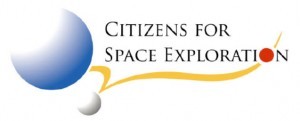Orion and Space Launch System
- Orion Supports Deep Space Exploration: Moon or Mars? Lockheed preps Orion for deep space adventure Orion, the new human spacecraft NASA is developing with Lockheed Martin, will be capable of starting astronauts on deep space missions, whether their destination is the moon or Mars. Under NASA’s Journey to Mars plan, astronauts would first journey to lunar orbit in the 2020s, then to Mars a decade later.
- Astronauts Train Aboard Orion: NASA astronauts train on Orion spacecraft for trip to Mars NASA astronauts are donning space suits to train for flight operations aboard the Orion crew capsule now under development for future deep space missions. “Engineers at NASA’s Johnson Space Center in Houston are evaluating how crews inside a mockup of the Orion spacecraft interact with the rotational hand controller and cursor control device while inside their Modified Advanced Crew Escape spacesuits,” according to the report.
- Orion Far Exceeds Apollo: Looks aside, NASA’s Orion is “light years ahead of what they had in Apollo” They may share a resemblance, but NASA’s Orion spacecraft is designed to carry astronauts well beyond the moon, the destination of Apollo crews in the late 1960s and 1970s. From the thermal control system to the solar arrays and the appointments inside the capsule and its backups — Orion is designed to carry more astronauts, further and for longer than its iconic predecessor.
- SLS Video: Video: NASA releases new animation of super-heavy-lift SLS booster A new NASA-produced video displays the launch and performance of the Space Launch System exploration rocket, which is just over two years from its first scheduled test flight. The three-week flight will pair the big rocket with an uncrewed Orion spacecraft to send the capsule around the moon and back to Earth for an ocean splashdown and recovery. The first human launch on an SLS is planned for as early as late 2021.
- SLS Science Missions: Grunsfeld: SLS/Spacewalkers could build space telescopes Spacewalking astronauts are capable of assembling a large space telescope in Earth orbit powerful enough to analyze the atmospheres of distant alien planets for signs of biological activity, according to John Grunsfeld, NASA’s associate administrator for science. Grunsfeld was part of a panel that discussed possible science missions for the Space Launch System that NASA is building to launch future missions of human deep space exploration. Other panelists suggested SLS could cut the journey of a robotic spacecraft to Jupiter’s ice- and ocean-covered moon Europa from seven to 2.5 years.
- Exploration Upper Stage: MSFC propose Aerojet Rocketdyne supply EUS engines NASA’s Marshal Space Flight Center will look to Aerojet Rocketdyne to advance the development of the Exploration Upper Stage, a more powerful second stage rocket engine for the Space Launch System exploration rocket. The proposal would have the more powerful version ready to fly on Exploration Mission-2, the first crewed test flight of NASA’s SLS and Orion capsule.
Citizens for Space Exploration – a pro-space, taxpayer, grassroots advocacy group  (http://www.bayareahouston.com/content/c_s_e/c_s_e) – has traveled to Washington, D.C. the past 24 years to meet face-to-face with Members/staff of Congress to discuss the value of America’s investment in space exploration. In order to sustain that dialogue on a regular basis, Citizens distributes “Space Exploration Update” to Congressional offices on a weekly basis. The intent is to provide an easy, quick way to stay abreast of key human space exploration program and policy developments.
(http://www.bayareahouston.com/content/c_s_e/c_s_e) – has traveled to Washington, D.C. the past 24 years to meet face-to-face with Members/staff of Congress to discuss the value of America’s investment in space exploration. In order to sustain that dialogue on a regular basis, Citizens distributes “Space Exploration Update” to Congressional offices on a weekly basis. The intent is to provide an easy, quick way to stay abreast of key human space exploration program and policy developments.







